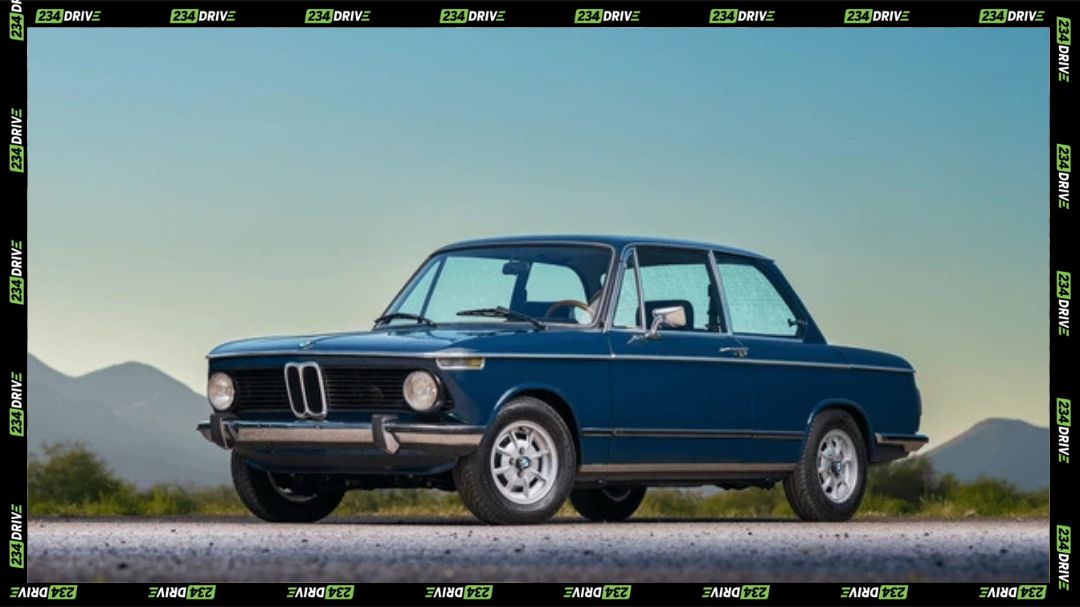The Honda Civic. It’s a name that echoes through automotive history. For over half a century, this compact car has captured hearts and minds. From its simple beginnings to its current tech-savvy form, the Civic has constantly evolved. Join us as we embark on a journey through the Civic’s fascinating past. We’ll explore its design transformations, engine upgrades, and groundbreaking innovations, from the 1970’s up to now. So buckle up and get ready for a ride through the ever-evolving world of the Honda Civic!
The 1970s: Humble Origins
The 1970s marked the beginning of the Civic story. These early models were simple and efficient. They laid the foundation for what would become a global phenomenon.
1973: The First Real Car
In 1973, Honda introduced its first “real car,” the Civic. Coming from a motorcycle background, this was a significant step. The first Civic was small and easily underestimated. But Honda had a vision. The company’s slogan said it all: “It will get you where you are going.”
Features of the First Generation
Despite its small size, the first-generation Civic offered practical features. It had an available AC, which was a luxury for a car of its size. The two-speed transmission was simple but effective. You could choose from a two-door CS or a three-door hatchback. Its compact size made it perfect for navigating crowded cities.
The 1980s: Practicality and Innovation
The 1980s saw the Civic grow in popularity. Honda continued to refine the car, adding new features and improving its practicality.
1980-1983: Second Generation – Refinement and Practicality
The second-generation Civic (1980-1983) was a step up from the original. It was still small, but Honda made it more practical and refined. The changes made it a more appealing choice for a wider range of buyers.
CVCC Technology: A Glimpse into the Future
One of the most notable features of the second-generation Civic was its CVCC technology. CVCC stands for Compound Vortex Controlled Combustion. While the name might not be catchy, its impact was huge. This technology was a precursor to the VTEC systems that would later become a Honda hallmark. The CVCC helped the Civic achieve impressive fuel economy. This made it a hit in America, especially during times of economic uncertainty.
1984: A New Look and Versatility
In 1984, the Civic underwent a major transformation. The third generation brought a new look and increased versatility.
Third Generation: A Fresh Start
The third-generation Civic had a completely new design. It was modern and stylish. Honda offered a variety of body styles. This included a tall wagon, a sporty coupe, and a practical sedan.
Body Styles: A Civic for Everyone
Honda made sure there was a Civic for every need. The tall wagon offered extra cargo space. The sporty coupe appealed to those seeking fun and style. The practical sedan provided a comfortable and efficient ride. The variety meant that, as the video states, there were “no excuses to not own a Civic.”
Interior Design: User-Friendly and Efficient
Honda earned a reputation for creating user-friendly interiors. The third-generation Civic was no exception. The controls were clear and easy to use. The interior was designed to maximize space and efficiency. This made the Civic a joy to drive and own.
1988-1991: Refinement and Performance
The late 1980s and early 1990s saw the Civic further refined. The fourth generation focused on improving the overall driving experience.
Fourth Generation: Honing the Formula
The fourth-generation Civic (1988-1991) was more refined than the third generation. The design wasn’t radically new, but it was improved in every way. It looked better, the interior was better. Overall it offered a better driving experience.
The EX Trim: A Touch of Luxury
For the first time, Honda offered an EX trim level. The EX was the “executive” version of the Civic. It had more features and a more luxurious interior. The EX trim also boasted 105 horsepower. That was a lot for a compact sedan at the time.
The CRX: A Glimpse of the Future
The fourth generation also included the CRX. This was a cool, two-door coupe with a unique design. The CRX featured a glass roof. It couldn’t open, but it allowed you to see through it. This was an early version of what we now know as the panoramic roof. The CRX was a stylish and innovative car that stood out from the crowd.
The 1990s: Curves and Technology
The 1990s brought a new design language to the Civic. The sharp edges of the past were replaced with smooth curves.
1992: Fifth Generation – Embracing Curves
In 1992, the Civic embraced curves. The fifth generation featured rounded edges and a modern look. It was a departure from the boxy designs of the past. The new design made the Civic look more appealing.
Trim Levels Galore: Finding the Perfect Fit
Honda offered a wide range of trim levels for the fifth-generation Civic. You could choose from the EX, LX, CX, VX, DX, and GX. This variety allowed buyers to find the perfect Civic for their needs and budget.
VTEC: Honda’s Game-Changing Technology
The fifth-generation Civic also introduced Honda’s VTEC technology. VTEC stands for Variable Valve Timing and Electronic Lift Control. VTEC optimizes engine performance at different speeds. At low speeds, it saves fuel. At high speeds, it provides more power. This technology was a game-changer for Honda and the auto industry.
1996: A Shift Towards Mainstream
In 1996, the Civic took a turn towards the mainstream. Honda focused on appealing to a broader audience.
Sixth Generation: A More Conservative Approach
The sixth-generation Civic was a more conservative design. Honda focused on build quality and reliability. The sporty, cool look was less of a priority. This wasn’t necessarily a bad thing. The Civic still did what it was supposed to do: provide reliable transportation.
Four Doors First, Two Doors Later
Initially, the sixth-generation Civic was only available as a four-door sedan. But customers wanted a two-door version. Honda listened and released the Civic Si a few years later.
The Civic Si: Keeping the Sporty Spirit Alive
The Civic Si helped keep the sporty spirit alive. It had a more powerful engine and a sport-tuned suspension. This made it a favorite among driving enthusiasts.
2001: The Corporate Era
The early 2000s saw Honda embrace a more corporate image. The Civic reflected this shift in focus.
Seventh Generation: A Departure from the Past
The seventh-generation Civic was a significant departure from previous designs. It didn’t resemble its predecessors. It was designed to be economical and practical above all else.
Function Over Form
The seventh-generation Civic featured a 1.6L 4-cylinder engine. This was designed for fuel efficiency. Honda did release a two-door version. However, it felt like a forced attempt at sportiness. Many consider this to be one of the least favorite Civic generations.
2006-2011: A Return to Sportiness
In the mid-2000s, Honda rediscovered its sporty side. The Civic once again became a stylish and exciting car.
Eighth Generation: A Sporty Revival
The eighth-generation Civic was a return to the sporty era. It had a cool design with sleek headlights and a segmented body. This Civic looked like something from the future.
A Futuristic Interior
The interior of the eighth-generation Civic was truly unique. It had a digital-analog gauge cluster. This displayed information in both digital and analog formats. No other car could pull this off at the time.
2012: Losing the Plot
The early 2010s were a low point for the Civic. The design lost its way, and the car became bland and uninspired.
Ninth Generation: A Missed Opportunity
The ninth-generation Civic lacked personality. Honda seemed to have lost the plot with this design. It was a missed opportunity to build on the success of the previous generation.
Handling: A Step Backwards
The handling of the ninth-generation Civic was not good. It felt like driving a box. It was a step backwards from the previous generations.
Interior Design: A Disappointing Execution
The two-tier interior from the last generation was poorly executed. It just looked out of place and awkward. The interior design did not live up to expectations.
2016-2021: Atonement and Redemption
In the late 2010s, Honda tried to make up for the mistakes of the past. The tenth-generation Civic was a return to form.
Tenth Generation: Finding Its Way Again
The tenth-generation Civic was Honda’s attempt to atone for the previous generation. It had an improved design with creases, shape, and personality. It was a welcome change after the blandness of the ninth generation.
The Civic Type R: A Red Badge of Honor
The tenth generation also saw the return of the Civic Type R. This high-performance variant sported a red Honda badge. The red badge is a symbol of performance and exclusivity. The Civic Type R was a standout car that impressed enthusiasts.
The End of an Era: Farewell to the Two-Door
Sadly, the tenth generation was the last to offer a two-door body style. Honda discontinued the two-door after this generation. This marked the end of an era for the Civic.
2022: The Present – Clean and Futuristic
The current Civic generation embraces a clean and futuristic design. Honda has toned down the more extreme elements of the previous generation.
Eleventh Generation: A Refined Approach
The eleventh-generation Civic has a clean and futuristic design. The bulges and sharp edges of the previous generation are gone. It presents a more refined and sophisticated look.
CVT: Efficiency in Check
The eleventh-generation Civic comes equipped with a CVT. CVT stands for Continuously Variable Transmission. This helps improve fuel economy. The CVT ensures that fuel economy is in check.
Honda Sensing and Safety Features
The latest Civic also includes Honda Sensing. This suite of safety and driver-assistance features enhances safety. It demonstrates Honda’s commitment to safety.
Honda also has an official website that provides detailed information about the Civic and other models.
What’s Your Favorite Civic?
The Honda Civic has come a long way. From its humble beginnings to its current form, it has constantly evolved. Now we want to know: What’s your favorite Civic generation?
What do you like about the Civic brand? Share your thoughts and experiences in the comments below. Let’s discuss the Civic’s appeal and its impact on the automotive world. Join the community and let’s discuss all things Honda. Remember to check out 234 Drive to keep up with the latest car news.










